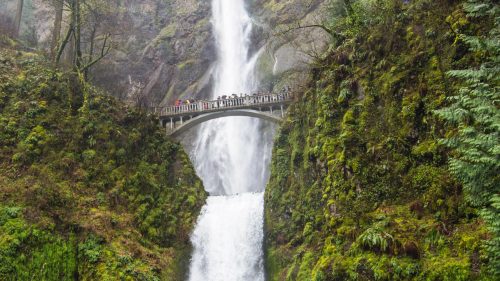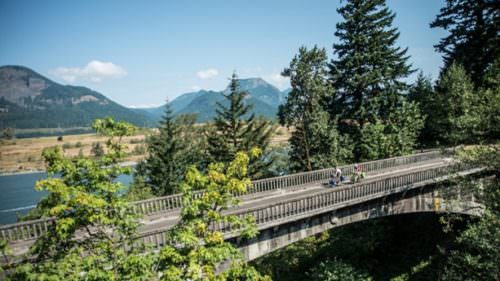As a kid growing up in Portland in the early 1970s, Stan Hinatsu remembers hiking and camping with his family in the Columbia River Gorge and falling in love with Oregon’s outdoors. He chose to study forestry at Oregon State University with a mission to help people enjoy and protect their public lands. Over the decades he’s worked on U.S. Forest Service crews to restore trails and fight fires, using timber and conservation strategies.
Today, Hinatsu is recreation program manager for the Columbia River Gorge National Scenic Area Forest Service, overseeing a workforce of regular and seasonal employees who do everything it takes to keep the parks running. He’s been called a renaissance man, helping to shape the Columbia River Gorge into one of the first congressionally delegated National Scenic Areas in the country and one of just a handful nationwide.
In his three decades of service, Hinatsu received numerous accolades for his three decades of service. Most recently, he was named a “Legend in the Management of Outdoor Recreation” by the American Recreation Coalition.
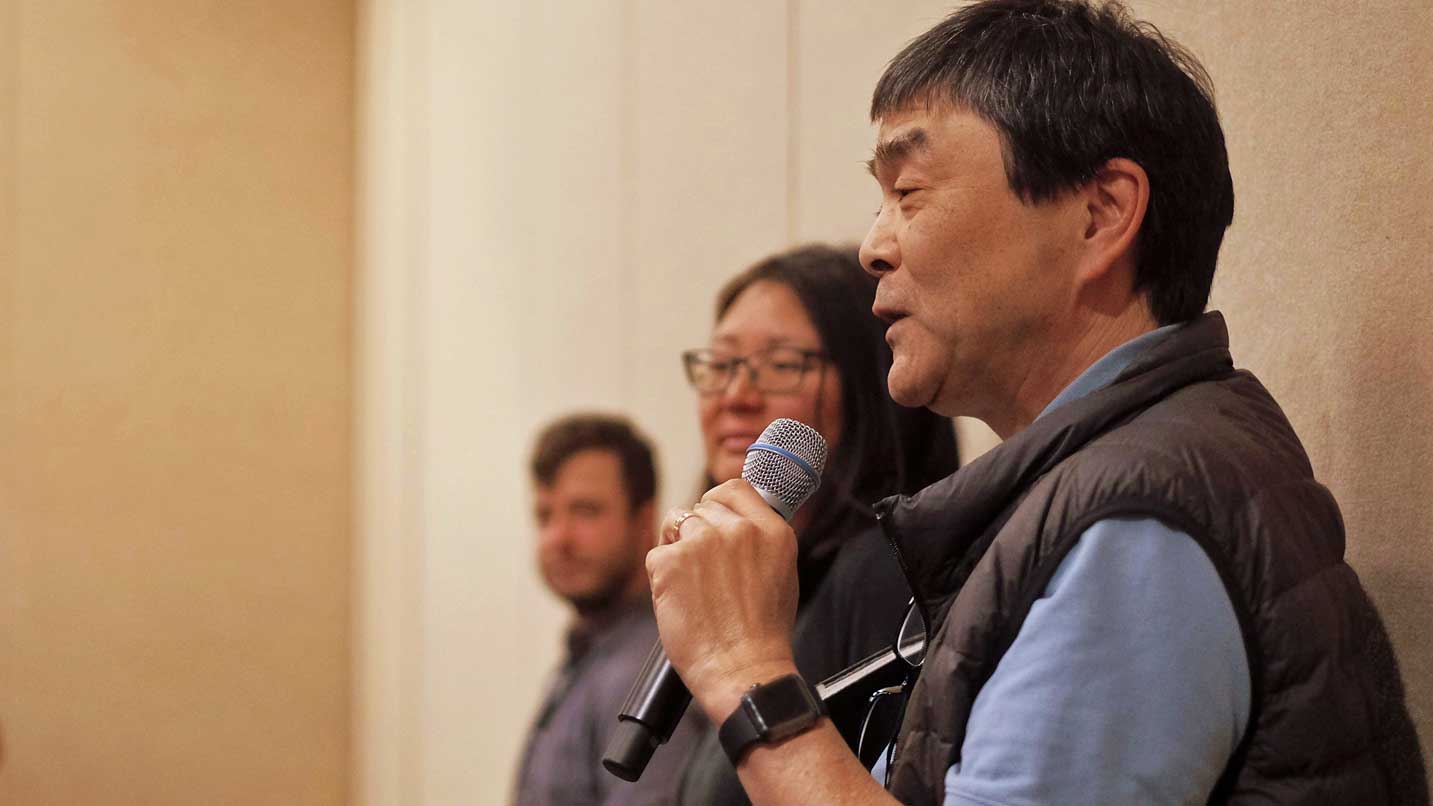
Maintaining these areas for all to enjoy takes a lot of coordination, especially during budget reductions. His workforce — along with other state and federal agencies — were especially slammed since scores of Oregonians started heading to the Gorge to recreate in the fresh air.
“We’ll be stretched to remove garbage, clean bathrooms, pick up litter, mow lawns, do visitor contact, collect fees on site, do education and public contact,” Hinatsu says. “Our routine maintenance is to repaint stuff, fix picnic tables and fire rings, do roofing projects, plumbing fixes, repair water lines and install new hand dryers.”
But wait, there’s more. In between seasons, “we open our sites and clean from winter storms,” Hinatsu describes. “We do hazard-tree work, shut down sites, turn off water systems, rake leaves, anything you can think of that requires maintenance in your yard. Also, many of our buildings are almost 100 years old or more. The folks you see out there cleaning toilets, providing information, posting bulletin boards and collecting fees — they also do all the maintenance work that you don’t see.”
So, the next time you head out to the Gorge to hike to a waterfall, cycle a car-free route, picnic, paddle or pitch a tent, consider the impact your visit has on land managers (and the land). Hinatsu asks that you help take these steps to enjoy and respect the land as much as he does.
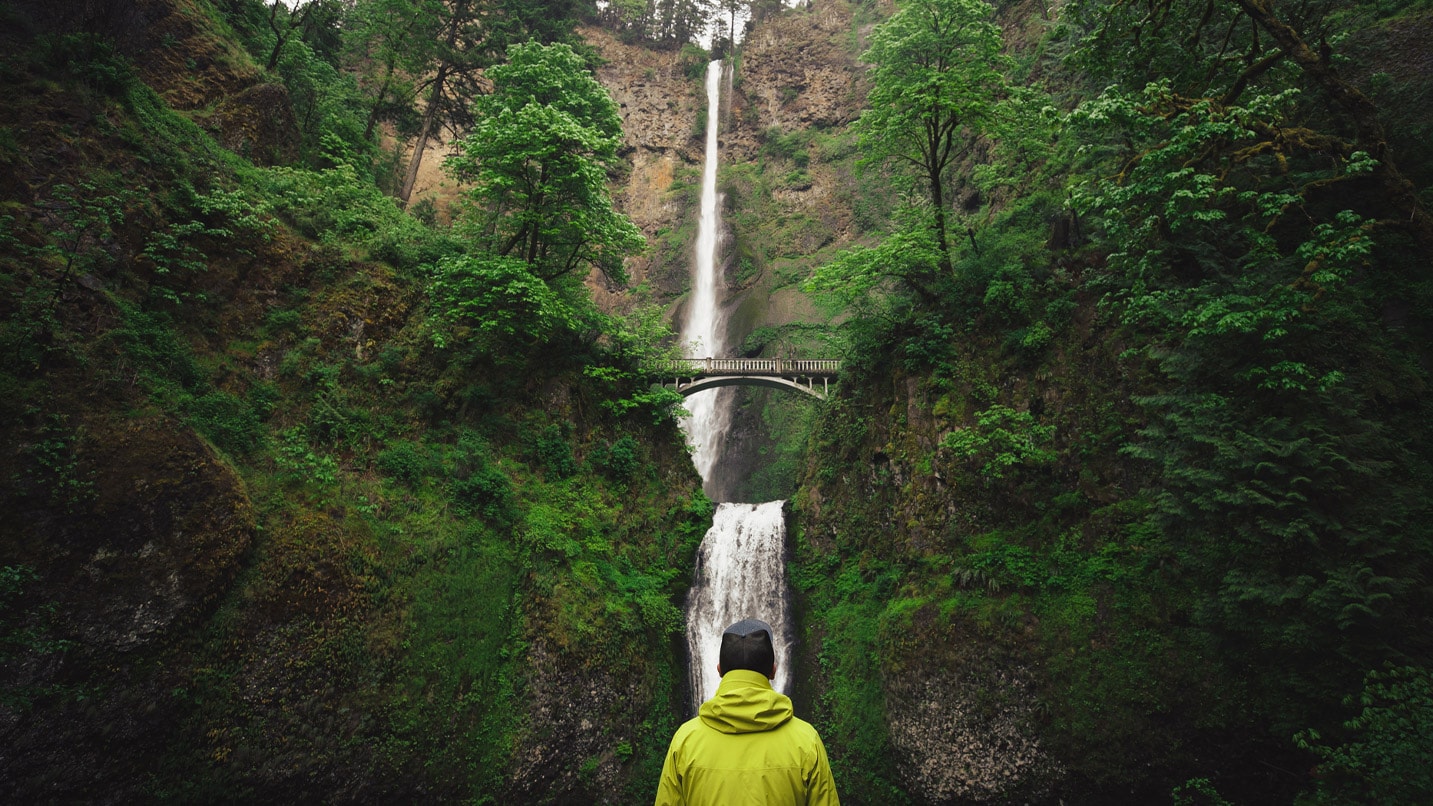
Plan and Be Ready
Do your homework before heading out the door. Oregon’s public lands are managed by different agencies, like the Forest Service, Bureau of Land Management, Oregon State Parks and city and county agencies. Each has unique rules and expectations. Check out this list of Oregon recreation sites for news about current services.
When planning your route, download trail maps in case there’s no cell phone coverage. Check weather and road conditions — keep your car equipped and bring sturdy shoes and layers for sun as well as rain. In addition to traveling in pairs, carry your Ten Essentials and know how to use the equipment. To ensure the best preparation (and experience) possible, read up on other practices to help you Take Care Out There.
Be Mindful When Nature Calls
Parks have robust cleaning standards for restrooms, so if you’ve experienced anything less, it’s due to overuse. Consider taking your mom’s advice and going before you leave the house. If a restroom or Porta Potty is not available, or if you’re on the trail when nature calls, choose your spot carefully: Walk at least 200 feet (or 70 big steps) from any campsite, trail or body of water. See this video on how to pee outside. Always pack your toilet paper out with you — it’s never something nice to find in the woods.
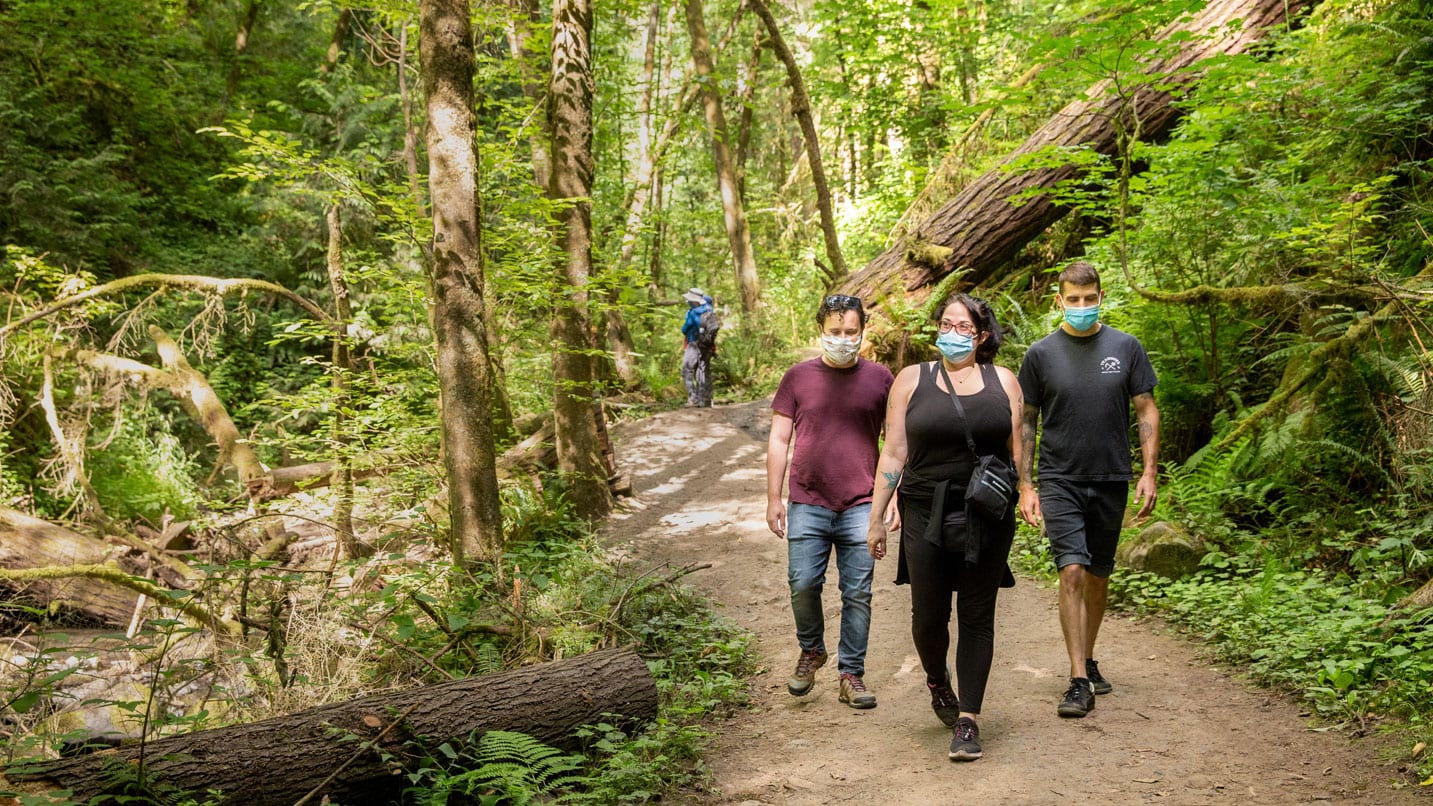
Stay on Trails
If there are official trails, stay on them. If there are none, don’t blaze a trail — you may be damaging sensitive habitats, causing erosion, imposing on private property or doing other damage to natural resources, making it harder for park staff to maintain your public spaces.
Be Respectful of Private Land
Know where you’re going so you’re not impacting someone’s private land. Be courteous to residents nearby the areas you’re visiting and don’t park your vehicle, go to the bathroom or trespass on their property if you wouldn’t want someone doing the same where you live.
Do Your Part on Dispersed Land
Park managers say there tends to be more litter and unattended campfires in dispersed areas — those that are primitive areas outside of regular campgrounds with no reservations, permits or fees required. There are also no maps and no facilities. Campers are required to pack out everything they bring in and adhere to campfire bans and sanitation rules.
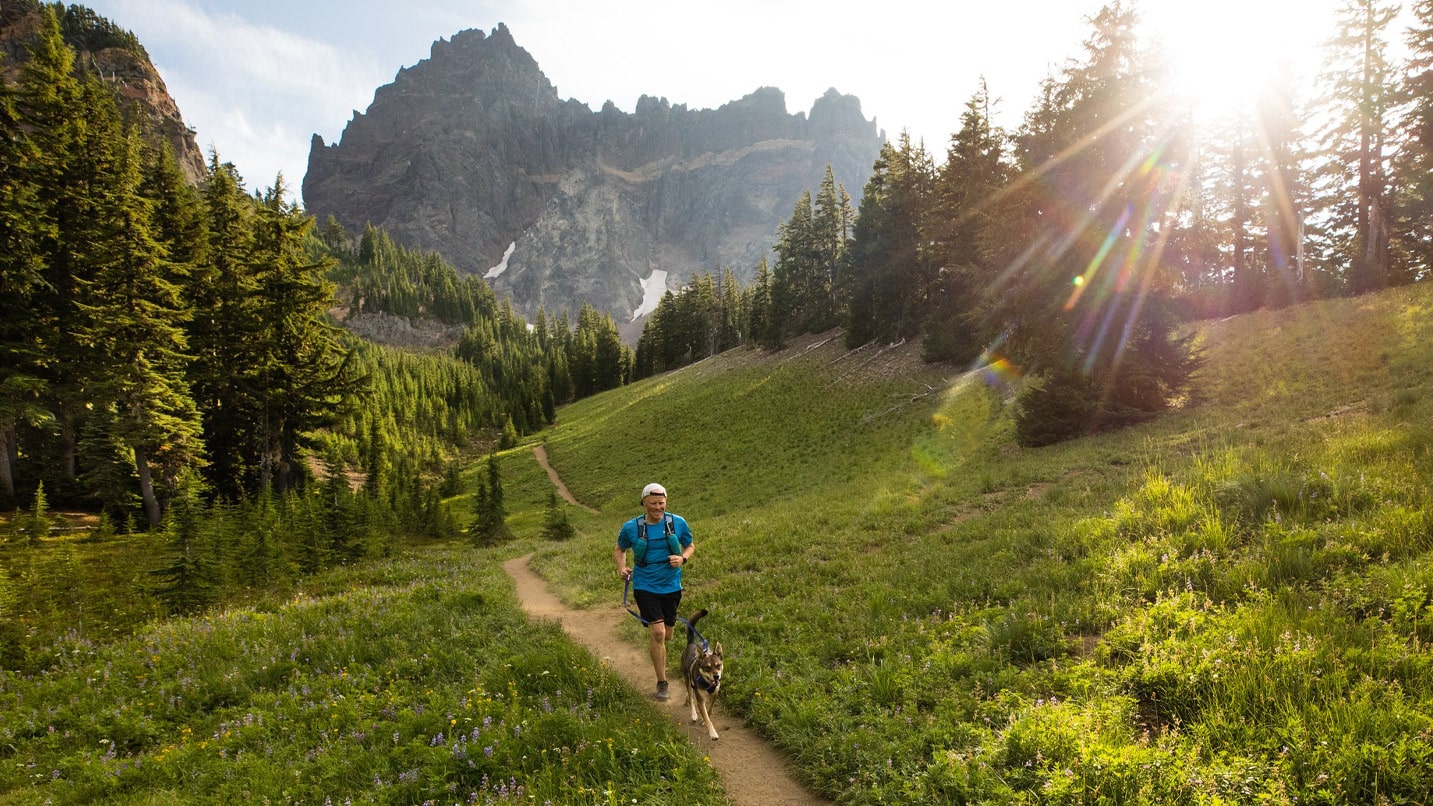
Know Your Limits
If you’re a first-time backpacker, don’t try to take on hiking into the Mt. Jefferson wilderness. Look for opportunities that are less strenuous. Know the abilities of everyone in your group (and keep a close eye on pets and children) so you all stay safe and don’t have to endanger the lives of rescuers.
Pack It In, Pack It Out
In general, it’s always best to Leave No Trace and pack out everything you bring in. At day-use areas, however, you may leave your trash in the garbage can — or if the can is full, set it next to the receptacle. Do not leave your trash on a bench, picnic table or anywhere else. Park staff must spend hours cleaning it up. Watch Oregon State Parks’ video on how to be a good steward of the parks.
Be Wildfire Safe
Wildfires happen most frequently during the hot, dry months of July, August and September, but fires can occur anytime of year if temperatures are unusually high and rainfall is low. Do your part to Keep Oregon Green and avoid human-caused actions that cause wildfires, like flicking a cigarette or match on the ground or in grass; driving cars, motorcycles and ATVs only on established trails to prevent sparks on dry grass; and following all campfire restrictions for the area at a campground or your home. At home, practice firework safety; use gas-powered equipment for mowing lawns early in the day, to avoid sparks; and have extinguishers ready next to a backyard burn, the leading cause of human-caused wildfires in Oregon. Find out how you can support Keep Oregon Green with a Smokey Bear license plate, featuring the iconic symbol of forest protection. Here’s what you need to know about wildfires in Oregon.
